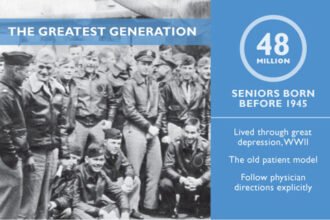TV medical dramas may not be the most accurate representation of what goes on in our hospitals, but in season 9 of Grey’s Anatomy, the doctors of Grey-Sloan Memorial set to work to develop suitable surgical techniques for doctors working in Syrian hospitals. As they attempt to demonstrate their innovations, however, they’re quickly confronted with the serious gaps in warzone hospitals – and they realize they’ll need to think differently. And as doctors in the United States, where we have cutting edge technology, we can learn a lot from this example of creativity under pressure.
Though we tend to emphasize the most up-to-date medical care, doctors who have participated in outreach work in low-income communities, at the border, and around the world often return to their home hospitals with valuable insights to share. These three doctors shared their experiences working in crisis zones and how it improved their approach to medical care at home.
Look Beneath The Surface With MSF
Doctors without Borders, also known by its French name Medecins Sans Frontiers (MSF), has been sending doctors to war and crisis areas since 1971 – and the organization has gained a great deal of experience in the decades since. They know how to work across language barriers, develop supply lines in the midst of bombings and other attacks, and provide comprehensive care despite limited resources.
Still, what makes MSF doctors so successful at their work isn’t simple ingenuity; it’s their ability to look beneath the surface and address trauma as part of the treatment process. In 2015, this included setting up a comprehensive mental health program in two refugee camps in northern Ethiopia, serving Eritreans fleeing war.
When MSF first arrived in Ethiopia, doctors were focused on vaccinations, reproductive health, TB treatment, and treatment for malnutrition. However, as doctors got to know patients in the refugee camps, though, emotional issues trickled to the surface. As the mental health supervisor, Robel Araya notes, many Eritrean refugees “develop depression, anxiety, and post-traumatic stress disorder linked to torture, violence, and abuse.” If refugees had any hope of getting back on their feet, they would need mental health care.
Of course, the same is true of many patients in American medical settings, from immigrants to those who grew up in poverty or experienced other forms of trauma, such as serious illness or domestic violence, can benefit from the same sort of integrated care. Doctors who have worked in crisis centers are acutely aware of this, and they bring this understanding back to their primary place of employment.
Play Is Part Of Health
When doctors head into a crisis zone after a natural disasters, they generally have a few key priorities, such as addressing infections caused by contaminated water sources, treating physical injuries, and helping individuals gain access to life-saving prescriptions that they used before the disaster; this was the emphasis among doctors tending to patients in Puerto Rico after the recent hurricane. But this kind of healthcare restoration isn’t the only care that matters. In fact, when working with children, many healthcare providers arrive with the goal of providing health education.
Health education was, in fact, the primary goal among students and faculty from Rush Medical College and the Rush University College of Nursing who traveled to Haiti to work with children the post-earthquake orphanages. In preparation for the trip, the group planned to talk about reproductive health, making healthy food choices, and maintaining good hygiene. They were also going to perform developmental assessments – and in the process, they made some remarkable discoveries.
During their visit, the Rush volunteers worked with a local mason to build a playground at the orphanage, and this playground was a gateway. Prior to their arrival, the head of the orphanage had already created a safe, nurturing environment for the children, but creating more opportunities for play was vital to the children’s physical, emotional, and psychological development. And this is where US-based doctors need to pay attention.
Increasingly sedentary lifestyles coupled with organized activities mean children have fewer opportunities for free play – but this kind of play is necessary if children are going to develop problem-solving and risk taking skills, improve emotional processing, and learn important social skills. When adults are overly involved in children’s play, this kind of development can be stifled. American doctors, many of whom have noticed that children are lagging behind in their physical and social development, should make play a central part of their examinations. Just because American children hypothetically have access to play it doesn’t mean that they are making adequate use of it.
Centering Collaboration
While international crises often come with a resource shortage, when doctors try to address healthcare gaps at home, the issues tend to be different. For example, in Los Angeles, home to the largest chronically homeless population in the country, physicians involved in outreach have a comparatively significant number of resources at their disposal. The patients, however, are decentralized and can be especially difficult to treat.
In an attempt to provide these individuals with better care, physicians have adopted a collaborative care approach that goes far beyond strict medicine. As Dr. Coley King, director of homeless services at Los Angeles’ Venice Family Clinic, explains, treating the homeless requires cooperation between physician assistants and nurse practitioners, case managers, social workers, and addiction counselors. This kind of collaboration is rare in most healthcare settings, except for among the sickest patients, but it could benefit everyone – especially those with chronic health conditions, mental illnesses, or who are living in poverty or other precarious populations.
Most doctors don’t want to operate under crisis conditions on a regular basis, but those who have the opportunity to spend time in such circumstances are valuable members of mainstream care teams. In particular, they understand the importance of holistic care and just what it takes to provide it – no matter what resources are available.








